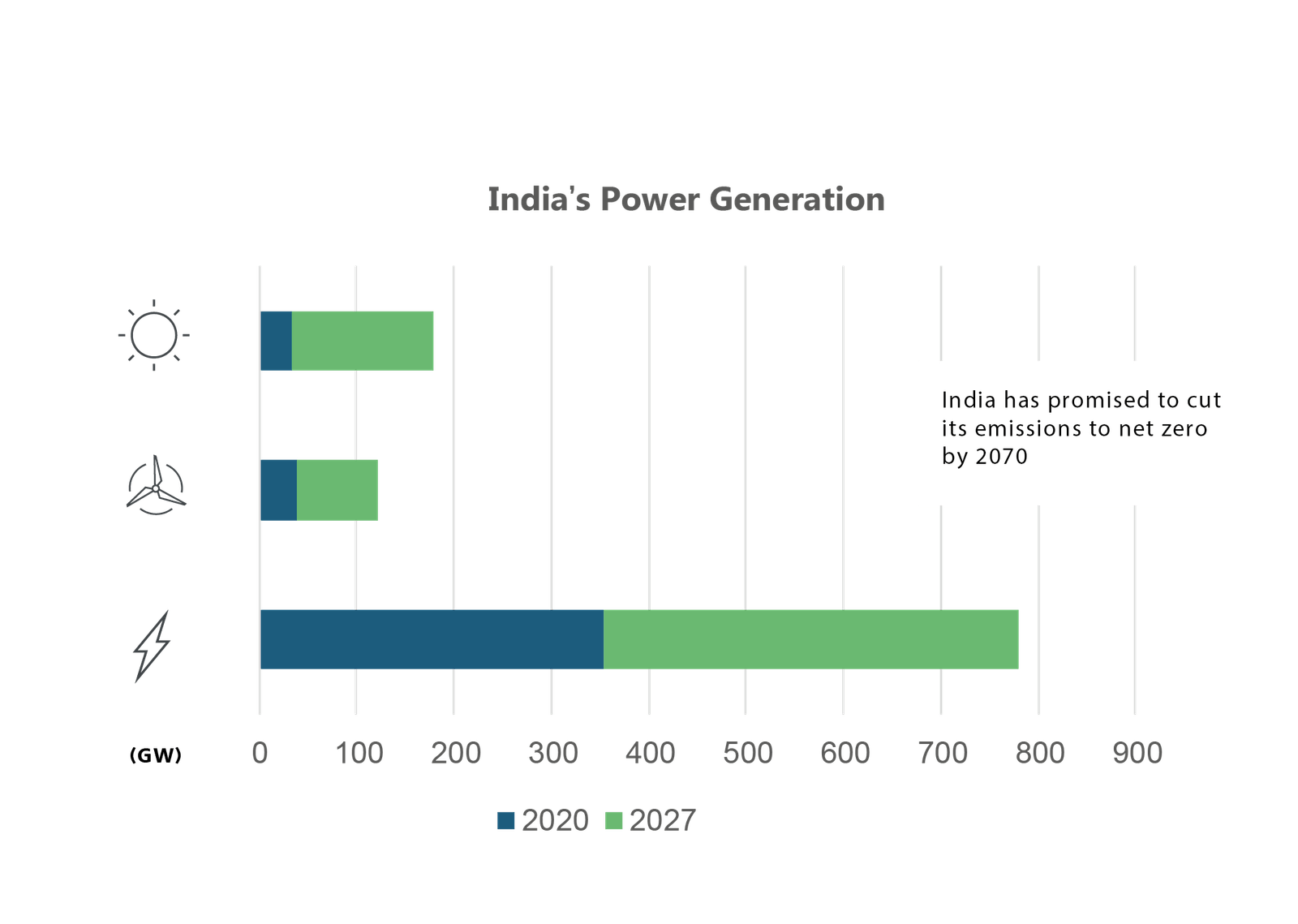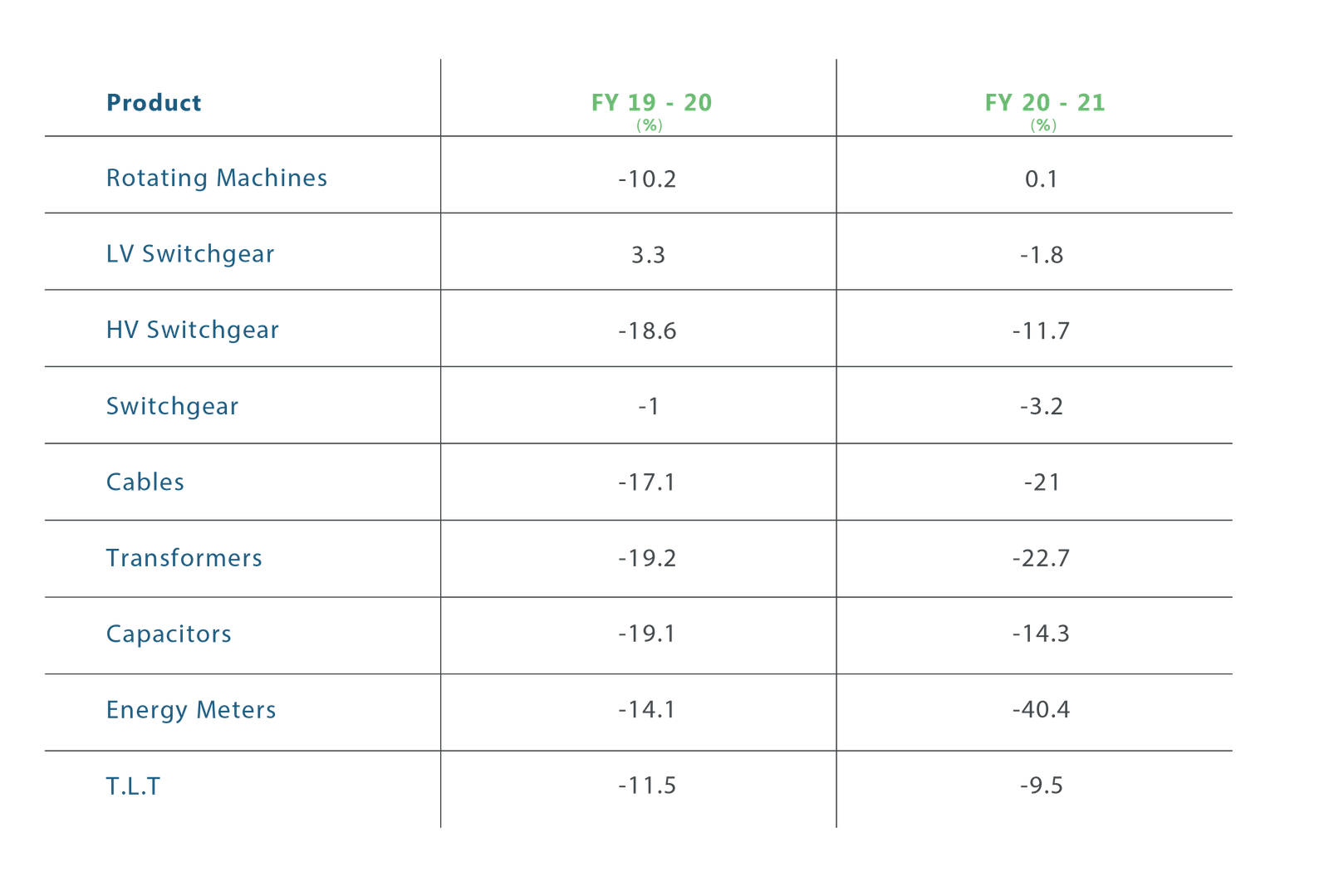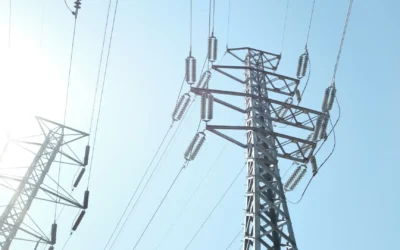- Global distribution transformers market experienced a dip of approximately 7.6% due to the pandemic in 2020 but managed to recover fully by the end of 2021.
- According to Power Technology Research, the installed base of distribution transformers in India is set to grow with a CAGR of 7.5% between 2021-2027.
- Dry type transformers in India are expected to observe a significant CAGR of 21% from 2021-2027.
Distribution transformers are an essential component of distribution networks around the world, whose smooth and efficient functioning is crucial for utilities to maintain their up times and provide best service to consumers. This article will cover the global distribution transformers market with a focus on India, especially looking at the demand drivers in the country.
Global distribution transformers market experienced a dip of approximately 7.6% due to the pandemic in 2020 but managed to recover fully by the end of 2021. It is now set to grow with a CAGR of 5.2% in terms of revenue from 2021-2027. During the last decade, global distribution transformers market was largely driven by electrification and end of life replacements. However, recently the high growth of renewables and the increasing uptake of electric vehicles for which utilities have to expand their network have become a major driver of the global distribution transformers market.
India on the other hand is one of the biggest distribution transformers market globally with around 13 million installed distribution transformers, the majority of which are overhead pole mounted distribution transformers. It also has a significant share in the distribution transformers market of the APAC region and the installed base is expected to grow significantly in coming years. Currently, almost all of the installed base of distribution transformers in India is oil-immersed transformers, with only 1% of units being dry-type transformers. As expected, the largest number of these distribution transformers in the country are operating at the 11 kV level, in the secondary distribution closer to the consumers, while only a small percentage operate at 22 kV.
The Indian distribution transformers market is expected to be driven by the generation capacity additions, which in turn would require proportional transmission and distribution infrastructure to evacuate this power. In addition to this, additional demand will be generated due to initiatives taken by the government to improve efficiency of the electricity grid and uptake of electric vehicles in the country. Details of demand drivers in the distribution transformer market of India are discussed in the following paragraphs.
Demand Drivers of Distribution Transformers in India
India’s generation capacity is expected to grow from 354 GW in 2020 to 426 GW by 2027. A significant increase is expected in the renewable generation as the percentage of renewables in the generation capacity mix is expected to grow from 17% in 2020 to 35% by 2027. Installed capacity of wind power is expected to grow from 38.6 GW in 2020 to 83.8 GW by 2027 whereas solar power generation capacity is expected to increase from 33.5 GW in 2020 to 145 GW by 2027.
It is further expected that India may increase its renewable capacity addition target as the country has made a commitment to reach net-zero by 2070 at COP26 summit.

Figure 1. India’s Power Generation Capacity 2020-2027.
Source: IEA
This massive growth in generation would require the transmission and distribution grid to also expand accordingly. Power grid corporation of India has recently announced an investment plan of USD 2.2 Billion to commission several power grid projects as part of its grid expansion plan. In addition to the transmission grid expansion, addition of distributed energy sources would also require strengthening of the distribution grid of the country. This will translate into an increase in the grid infrastructure investment including transformer, switchgear, and distribution lines etc.
On the other hand, efficiency of the distribution grid has remained a major issue over the years. Several initiatives were introduced in the past to help improve the operating losses of distribution operators. Although a little improvement has been observed in this regard, but replacements were carried out which included distribution transformers alongside other equipment under those initiatives. This drive to improve the efficiency of the distribution grid would mean a large percentage of the market being driven by brownfield replacements.
Covid-19, however, has severely impacted country’s plans of adding grid capacity. In FY 2020-2021, India had plans of adding around 63,000 MVA of additional grid capacity, but was only able to add 33,000MVA by Jan 2021. This in turn also impacted the transformers market in the country, which declined by 23% in FY 2020-2021.

Figure 2. India’s Power Grid Infrastructure Market Growth.
Source: IEEMA
Moving forward, in addition to the renewable energy, electrification in the transport sector is also expected to impact the distribution grid. Even though the active fleet of passenger electric vehicles in the country is less than 50,000 cars at the moment, it is expected to cross 1 million vehicles by 2029. Additionally, there is an increasing trend of electrification in the commercial vehicles, especially buses and light commercial vehicles (LCVs). With such rapid increase in transport sector electrification, the country has announced several plans to support this growth in EVs with strategic expansion of EV charging infrastructure. India’s AC and DC charger installed base will grow at ~60% and ~50% CAGR respectively between 2021 to 2030. This massive growth in EV charging infrastructure will directly impact the distribution grid in terms of higher grid capacity demand and grid flexibility.

Figure 3. CAGR 2020-2030 AC & DC EV Chargers in India.
Source: Power Technology Research
Looking Ahead
Looking ahead, as the pandemic effect waivers off, the installed base of distribution transformers in India is set to grow with a CAGR of 7.5% between 2021-2027, as compared to 6.4% CAGR for the entire APAC region excluding India for the same duration. Ongoing retrofitting and refurbishment in the existing electric infrastructure will positively influence the indoor dry-type transformer market in India. Public and private investments in the real estate industry of the country are on the rise, which, in turn, is expected to boost the dry-type transformer adoption in the country. From a technology perspective, the market of oil-immersed distribution transformers is expected to grow with a CAGR of 7.2% between 2021-2027. On the other hand, dry type transformers, which are currently only 1% of the installed base of distribution transformers, are expected to observe a significant growth in demand with a CAGR of 21% from 2021 to 2027, originating from both generation and utility sector. This strong growth, post the slowdown in the market due to Covid-19, will ensure that the country remains one of the largest markets of distribution transformers, not just in the region but also globally for the years to come.
Distribution Transformers Service Overview
The research presented in this article is from PTR's Distribution Transformer service. For information about this service please submit a request shown below.
Contact Sales:
More about our:
Distribution Transformers Market Research
Recent Insights
Evolution of DOE 2027-2056 Efficiency Standards: Impacts on the Distribution Transformer Industry
• One aspect of the DOE 2027-2056 proposed law advocates for amorphous steel in the manufacturing of distribution transformers.• Deployment of the...
US and EU Strategies in Smart Buildings
Download Service Overview The EU and USA aim to decarbonize their building sectors to meet emission reduction targets. Initiatives like the Home...
Navigating the Evolving Terrain: An Exploration of the Distribution Transformers Market in the MEA Region
The distribution transformer market for the Middle East and Africa (MEA) region is the smallest compared to other regions. Three countries,...


